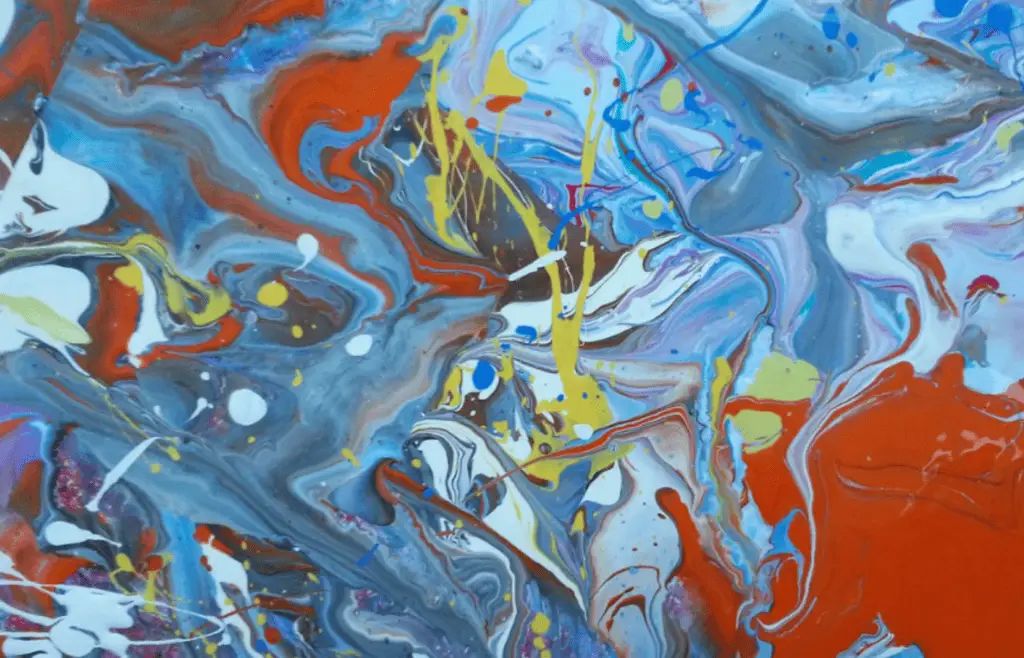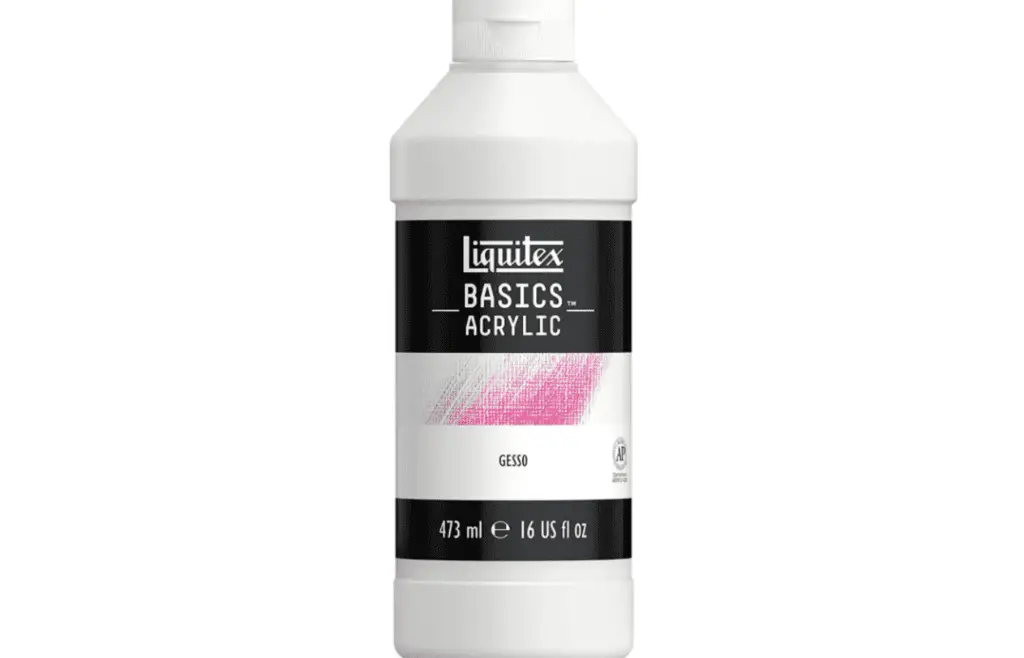To master the technique of acrylic pouring, you need a pouring medium mixed with paint to help it pour appropriately. Since gesso works so well to help acrylic paint adhere to surfaces, can you use gesso as a pouring medium?
You can use gesso as a pouring medium and get some fantastic results. Gesso helps acrylic paint stand out on a surface, especially if that surface is one that tends to absorb acrylic paints without some kind of priming agent.
Acrylic pouring is a beautiful and unique method of pouring acrylic paint onto a canvas or other surface and allowing the paint to mix and mingle before drying.
Understanding Pouring Mediums in Acrylic Pouring

A pouring medium helps make acrylic pouring more of a fluid art form. Instead of pouring acrylic paint onto a surface and having it simply stay in a puddle, a pouring medium helps move the paint along the surface as it’s guided in different directions.
As with most painting products, there are cheap options and there are professional options. Spending some extra money on a high quality pouring medium is certainly worth it to get the best results.
To check the current price and availability of Apple Barrel Pouring Medium, click here to view the listing on Amazon.
Understanding Gesso

Gesso is usually made with a combination of a filler, usually gypsum or chalk, and a white pigment. Some formulations of gesso have acrylic paint in it as well, while others are either translucent or come in various colors. Gesso is often found in jars or bottles and you can also find gesso in spray form.
Many different brands sell their own type of gesso. Formulas vary between brands by the amount of pigment versus filler used which can also determine how liquid or thick the gesso is. Thickness can determine how much grip the gesso has, often referred to as tooth, which will also determine how well paint and other materials stick to the surface primed with gesso.
Gesso is typically used as a primer because of how effectively it captures paints. It helps to fill in little crevices and gaps on materials such as canvas and wood so paint stays flat on said surface and doesn’t fade into the surface. Some artists will also use gesso as a sealant, though this isn’t as common as it used to be when gesso contained glue.
We always suggest using a premium gesso like Mont Marte. To check the current price and availability of this gesso, click here to view the listing on Amazon.
Can Gesso be Used as a Pouring Medium?
Gesso works very well as a pouring medium, especially for acrylic pours. Gesso helps to make sure that once the paint is poured on the canvas and has a chance to settle in place it’s going to remain there. Most acrylic pour enthusiasts will choose an acrylic gesso as their pouring medium over other types of gesso.
Ultimately, gesso needs to be at the right consistency in order to work well as a pouring medium. Gesso that is too thick will make it immensely difficult to pour acrylic paint at the right pace. On the other hand, gesso that’s too thin or watery will ruin the acrylic paint. It’s best to start with a thicker formula and add small amounts of water as needed.
There are products available where their intended purpose is to be a pouring medium. With these products, all you need to do is measure and pour depending on how much acrylic paint you’re using. There’s no need to worry about diluting or stressing about how thick the pouring medium might be, since these pouring mediums are designed for acrylic pouring specifically.
Advantages and Disadvantages of Using Gesso as a Pouring Medium

Gesso is a magnificent choice for priming a canvas. It sits well on canvas material of all kinds, whether it’s an inexpensive, framed canvas from a craft store or a hand-stretched surface. Gesso will make sure that acrylic paint doesn’t sink into the canvas or painted surface, causing your painting to be less vibrant and saturated as you want.
Since some gesso is thick, it may not be suitable for the fluidity needed for a successful acrylic pour. Adding too much water to your gesso could also impact the acrylic paint once it’s added to the mixture since acrylic paint is water soluble.
Gesso is not the easiest pouring medium to work with compared to other available pouring mediums. It’s certainly worth trying if you enjoy working with gesso or it’s the only thing you have on hand at the time.
How to Use Gesso as a Pouring Medium
When preparing an acrylic pour, you can prime your surface with gesso. It’s usually easier to pour it into a different container rather than trying to get an even distribution on your brush from the gesso container. It also makes it easier to mix in any kind of thickener or to dilute it. You only need a small amount of gesso for one coat.
You’ll want to start off with painting gesso on your canvas in small X formations. Once you’ve been able to get your canvas covered in gesso, you’ll want to brush out any lines or gaps by rubbing your brush from left to right on the canvas. Sit the canvas on top of something elevated such as cups to dry for at least one day.
As a pouring medium, you’ll want to mix your chosen gesso with your acrylic paint in a cup or container. If using a thicker gesso, dilute it before mixing it with acrylic paint. Mix the paint and gesso very well until they are completely combined. Let the mixture sit for a few minutes before you start the pouring process.
Final Thoughts
A pouring medium is essential for a successful acrylic pour. Gesso works as a sufficient pouring medium as well as a priming agent for your chosen surface. If you don’t have a pouring medium on hand, using gesso is better than experimenting with other painting products and ruining your acrylic pour.
Acrylic pouring in and of itself is meant to be fun and experimental, and the end result doesn’t have to be perfect. The only precision you really need is measuring your paint and pouring medium, and the rest can be as creative and intuitive as you would like.

